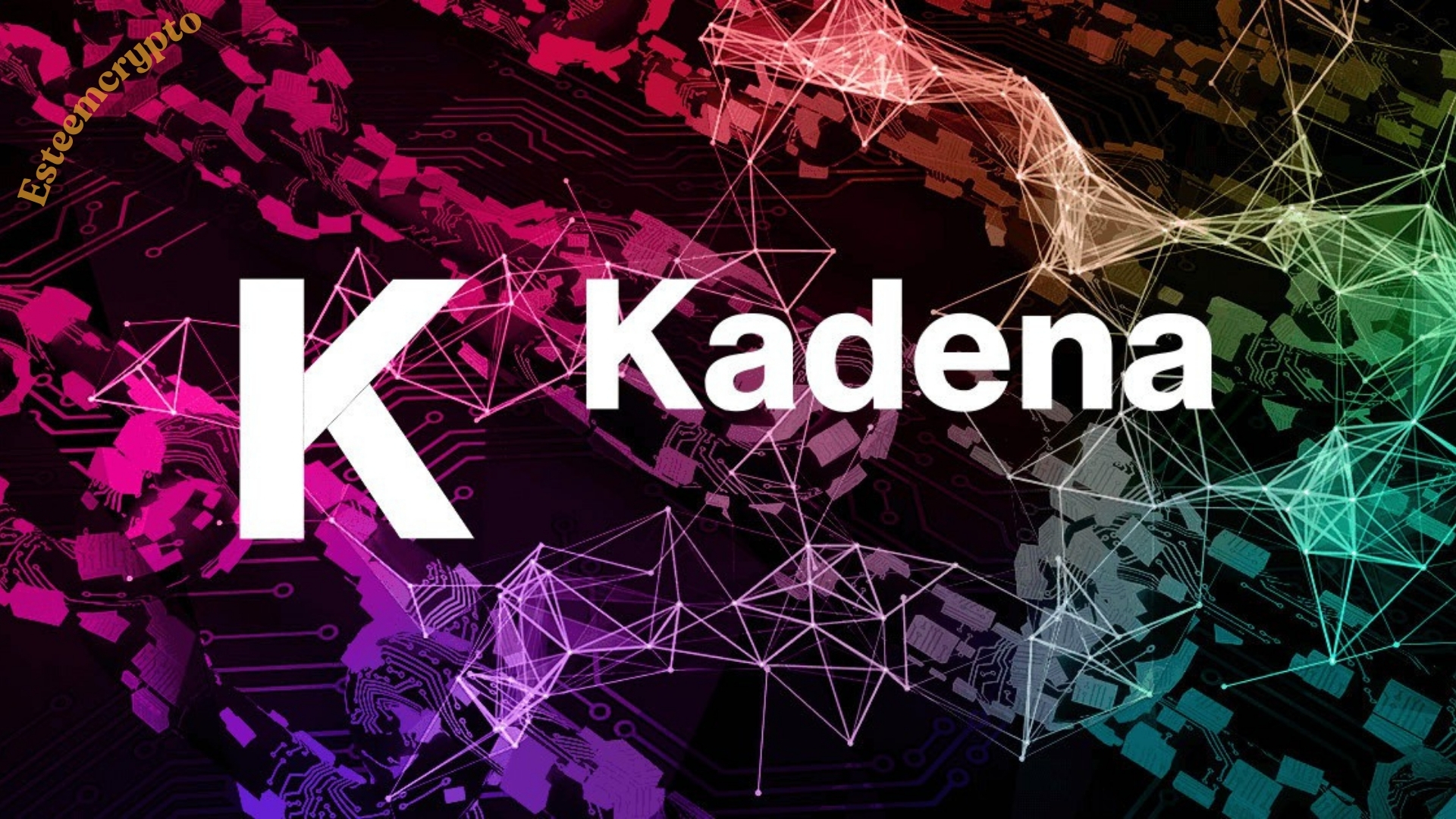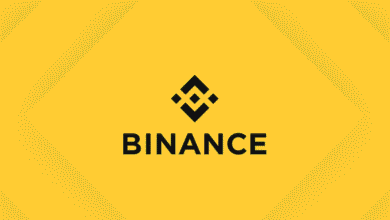Blockchain Price Live Trends, Drivers & 2025 Outlook
Blockchain price drivers, trends, metrics, and cycles. Learn analysis tools, risk tactics, and 2025 outlook for smarter crypto decisions.

Blockchain price is a deceptively simple phrase for a highly complex, always-on financial system. Unlike traditional markets that pause on weekends, the cryptocurrency market trades 24/7 across thousands of exchanges, millions of wallets, and countless networks. Prices move because of code and community, incentives and speculation, monetary policy and memes—often all at once.
For readers trying to make sense of velocity and volatility, the good news is that blockchain markets leave an unusually transparent data trail. With the right mental models and a disciplined approach, you can interpret those signals with more confidence and act with less noise.This guide explores how blockchain price forms, which catalysts matter most, how to read on-chain data, and what to watch in the coming year.
You’ll learn frameworks for analyzing Bitcoin price and altcoin cycles, how liquidity shapes trends, why stablecoins are the market’s plumbing, and practical methods to manage risk when narratives change. The aim isn’t to predict the next tick; it’s to help you understand the machines, incentives, and human behavior that make those ticks happen.
What Blockchain Price Really Means
In everyday conversation, people conflate blockchain price with the price of a single coin. In practice, it spans an entire digital asset universe. The term reflects three overlapping layers:
The asset layer
This is the price of individual tokens: BTC, ETH, SOL, or governance and utility tokens tied to DeFi protocols, layer-2 scaling solutions, or GameFi worlds. Each trades on centralized and decentralized venues, often with different liquidity profiles and fee structures.
The network layer
Prices also reflect the health of the underlying networks. Hash rate, validator participation, gas fees, and network activity can influence perception and capital flows. A scalable network with rising usage tends to command a premium, while congestion or security incidents can compress valuations.
The macro layer
Finally, blockchain assets exist within the global risk machine. Interest rates, liquidity cycles, regulatory posture, and dollar strength influence risk appetite. When the cost of capital falls and liquidity expands, market capitalization across crypto can rise in tandem; when financial conditions tighten, speculative exposure contracts.
Understanding blockchain price is therefore an exercise in triangulating asset fundamentals, network health, and macro context.
How Prices Are Formed The Microstructure

Order books, AMMs, and fragmentation
Traditional exchanges centralize liquidity in a single order book. Crypto fragments it. You have deep centralized exchange (CEX) order books living alongside decentralized exchange (DEX) pools governed by automated market makers (AMMs). Price discovery happens across both. When liquidity spreads thin across many venues, slippage and volatility increase, especially for smaller caps.
Funding rates and perpetual futures
Perpetual futures dominate crypto. Funding rates—fees paid between long and short traders—help tether futures to spot price. Persistently positive funding suggests aggressive long positioning; negative funding implies hedging or bearish conviction. Sudden short squeezes or long liquidations often mark local tops or bottoms as cascading liquidations accelerate moves.
Liquidity begets volatility—or dampens it
Where liquidity concentrates (near round numbers, prior highs, or large option strikes), price tends to gravitate. During thin hours—weekends or holidays—blockchain price can air-pocket through levels that would otherwise hold. Seasoned traders track liquidity maps, option open interest, and bid-ask depth to anticipate where moves may run or stall.
The Macro Forces Moving Blockchain Price
Interest rates and the dollar
Crypto has behaved like a high-beta risk asset during tightening cycles. When real yields rise, speculative assets often de-rate as future cash flows get discounted more heavily. Conversely, easing policies and a softer U.S. dollar can stimulate flows toward Bitcoin and Ethereum, particularly when traditional yields look less attractive.
Inflation growth and narrative shifts
Narratives are the market’s language. In inflationary environments, digital gold narratives strengthen Bitcoin price. In growth phases with lower inflation fear, tech bet narratives buoy smart-contract platforms. Shifts between these narratives can reprice sectors rapidly even without dramatic changes in fundamentals.
Geopolitics and capital controls
Regulatory tone and capital mobility matter. Friendly jurisdictions attract miners, developers, and market makers, deepening liquidity and confidence. Restrictive policies may push activity offshore or on-chain, affecting which venues set the reference price and how quickly capital rotates.
On-Chain Metrics That Matter
One advantage of blockchain is transparent data. While no single metric explains everything, a mosaic of on-chain indicators improves your read on trend and sustainability.
Active addresses and transaction count
Rising active addresses, adjusted for spam and bots, indicate growing demand for block space and services. Sustained increases during sideways price action often precede breakouts, while price rising on flat or falling activity can signal exhaustion.
Fees, block space, and L2 throughput
High gas fees can be bullish or bearish depending on context. They’re bullish if fees reflect genuine demand for block space and users remain sticky thanks to layer-2 rollups. They’re bearish when fees price out users and no scaling relief is in sight, pushing activity to cheaper competitors.
Realized cap and MVRV
Realized capitalization values each coin at its last on-chain move rather than current market price. The MVRV ratio (market value to realized value) gauges profit saturation. Elevated MVRV suggests holders sit on large unrealized gains—fuel for distribution—while depressed MVRV can indicate capitulation and long-term value.
Stablecoin supply and velocity
Stablecoins are the crypto money supply. Expanding stablecoin float and faster velocity typically precede risk-on moves as sidelined capital becomes deployable. Contractions, redemptions, or de-pegs can drain liquidity, pressuring blockchain price across the board.
Sector Rotation Bitcoin, Ethereum, and the Long Tail
Bitcoin dominance as a barometer
BTC dominance—the share of total market cap in Bitcoin—tracks risk preference. Rising dominance often aligns with caution, macro stress, or early bull phases where capital consolidates into the most liquid asset. Falling dominance often marks altcoin season, when risk tolerance increases and capital cascades down the quality curve.
Smart-contract platforms and modular narratives
The Ethereum economy hinges on staking yields, DeFi revenues, and L2 scaling adoption. Competing L1s thrive when they deliver cheaper block space, strong developer incentives, and compelling consumer apps. Modular architectures—separating data availability, execution, and settlement—have opened new narratives that can rerate entire ecosystems.
Application tokens and cash-flow visibility
App tokens attached to real usage and transparent fee capture tend to command better multiples in bear markets. When fees, token burns, or revenue share mechanisms line up with growth, blockchain price becomes less speculative and more cash-flow-anchored.
Catalysts What Sparks the Big Moves
Halvings upgrades and token economics
Bitcoin halvings alter issuance schedules; supply shocks can influence cycles when demand is steady or rising. Protocol upgrades (throughput improvements, proof-of-stake refinements, privacy features) can attract developers and users. Tokenomics changes—emissions cuts, staking incentives, or unlock schedules—directly affect circulating supply, a critical lever for price.
Institutional adoption and product launches
Listings on major platforms, spot ETFs, custody improvements, and integration into payment rails broaden demand. Liquidity funnels reduce frictions, making it easier for large pools of capital to participate without moving the market unfavorably.
Security incidents and regulatory actions
Conversely, bridge exploits, oracle failures, or unfavorable rulings can drain confidence and force deleveraging. Because crypto is reflexive, initial shocks can propagate through collateral, as DeFi loans, perps, and options all reprice simultaneously.
Valuation Frameworks Putting Structure on Volatility
Comparable networks and revenue multiples
For fee-generating networks or apps, compare price-to-fees or price-to-protocol revenue across peers. Adjust for token emissions, treasury runway, and user stickiness. This brings an equity-style lens into a token market while respecting its unique mechanics.
Monetary premium vs utility premium
Some assets (e.g., BTC) derive value from monetary premium—scarcity, security, and credibility as a store of value. Others rely on utility premium—the ability to run apps, settle transactions, or secure other chains. The blend determines sensitivity to rates, fees, and competition.
Cost of production and security budgets
For proof-of-work assets, hash rate, energy costs, and miner breakevens can inform downside thresholds over time. For proof-of-stake systems, the security budget is paid to validators in inflation and fees; if rewards drop too low, validator participation and network security can degrade, affecting risk premia.
Reading the Cycle Practical Market Structure
Accumulation markup distribution markdown
Crypto cycles echo classic market structure. In accumulation, long-term holders absorb supply while price grinds sideways. Markup begins as resistance breaks and narratives coalesce. Distribution sees rising supply from early entrants to latecomers at elevated prices. Markdown forces capitulation, cleaning leverage and re-rating expectations.
Spot leads, leverage follows
Healthy trends start with spot demand—wallet accumulation, exchange outflows, and rising realized price. As the move matures, leverage (perps, options) amplifies it. Divergences—price up while spot flows weaken and funding soars—warn of fragility.
Time in market beats timing the market
Because blockchain price is notoriously hard to time, many investors anchor to disciplined accumulation, defined risk, and rebalancing. The objective is to survive drawdowns and be present when asymmetric upside appears.
Risk Management Staying Solvent and Sane
Position sizing and invalidation
Size positions so that one thesis failing doesn’t impair your plan. Each trade should have an invalidation level where the original reason to hold is no longer true. In crypto, that might be a dropped network upgrade, a security incident, or a failed product milestone.
Liquidity awareness and venue risk
Only deploy sizes that can be exited under stress. Diversify venues to mitigate counterparty and custody risk, and consider cold storage for long-term holdings. For on-chain activity, spread collateral to avoid a single point of failure and monitor smart-contract risk.
Stablecoin strategy and dry powder
Keep a deliberate stablecoin allocation for volatility events and rebalancing. This not only cushions drawdowns but lets you buy value when risk-reward skews positive.
Also Read: Toncoin Price Outlook Trends, Forecasts & Strategy
How to Track Blockchain Price Like a Pro

Combine spot, derivatives, and on-chain dashboards
No single screen is enough. Build a ritual: check spot pairs and depth, scan perp funding and open interest, then review on-chain data such as active addresses, fees, and stablecoin flows. This three-panel approach reduces blind spots.
Follow flows, not just headlines
Watch exchange inflows/outflows, whale wallet movements, L2 bridge usage, and mint/burn events for major stablecoins. Flow data often leads headlines because it captures behavior before narratives are written.
Monitor calendars and code
Add network upgrade roadmaps, token unlock schedules, DAO votes, and governance proposals to your calendar. Price often moves ahead of these events as informed participants position early; being aware helps you avoid becoming exit liquidity.
Regional, Legal, and Accounting Factors
Jurisdictional nuance
The same token can trade at different premiums across regions due to fiat on-ramp access, banking rails, and local risk appetite. Keep an eye on stablecoin acceptance and regulatory clarity; these shape who can buy and how much.
Tax and accounting rules
Tax treatment of staking rewards, airdrops, and token swaps can influence holding periods and sell pressure. Protocol treasuries and foundations also face accounting constraints that affect token unlocks and market operations.
2025 Outlook Themes to Watch
Scaling the user experience
Expect continued focus on layer-2 performance, account abstraction, and intents that make complex on-chain actions feel like a single click. Networks that turn block space into a smooth consumer experience should see stronger adoption and pricing power.
Real-world assets and yield bridges
Tokenizing real-world assets (RWAs)—from treasuries to invoices—can bring steady yield and institutional participation, deepening liquidity. If compliant rails mature, this bridge can stabilize blockchain price by anchoring part of the market to off-chain cash flows.
Interop and modular ecosystems
As data availability layers, restaking, and shared security models evolve, expect new valuation approaches that price security and throughput as services. Winners will demonstrate sustainable fees, strong developer retention, and clear economic alignment with token holders.
Regulation by clarity rather than enforcement
Clearer guardrails—registration paths, disclosures, and prudential standards—would reduce tail risk and unlock larger pools of capital. Jurisdictions that balance innovation and consumer protection can become gravitational centers for liquidity.
Common Myths to Retire
Price only follows hype
Narratives spark attention, but sustained trends require liquidity and usage. The most resilient rallies pair rising prices with on-chain growth and real revenue.
Decentralization guarantees value
Decentralization is a spectrum and a means to an end. Networks must still deliver utility, security, and an economy that rewards participants. Tokens without product-market fit struggle regardless of governance ideals.
Cycles are identical
Each cycle rhymes, but structure evolves with new primitives: from ICOs to DeFi to NFTs to modular infrastructure. Applying yesterday’s playbook blindly invites risk.
Bringing It All Together
Blockchain price is the emergent output of code, capital, and coordination. Prices swing because incentives shift, liquidity migrates, and new technologies challenge incumbents. By layering microstructure insights order books.
AMMs, funding), macro context (rates, liquidity), and on-chain indicators (usage, fees, stablecoin flows), you can interpret moves with more clarity and react with less emotion. The goal isn’t to guess each candle, but to build a resilient process—one that survives noise, compounds knowledge, and participates when probabilities align.
Conclusion
The world of blockchain price is vast, but its moving parts are observable. When you rest your analysis on three pillars—data, discipline, and narrative awareness—you replace guesswork with edge. Track liquidity and flows. Respect risk and position sizing. Read on-chain metrics and upgrade calendars. And remember that survival is a strategy: in a market defined by compounding innovation, staying solvent and present is often the most profitable trade.
FAQs
Q: What is the simplest way to start analyzing blockchain price?
Begin with a daily routine: review spot charts and depth for your top assets, scan perpetual funding rates and open interest, then check on-chain data such as active addresses, fees, and stablecoin supply. This three-step rhythm captures price, leverage, and usage—the core drivers of trend sustainability.
Q: How do stablecoins affect blockchain price?
Stablecoins are the market’s money supply and settlement rail. Expanding supply and healthy velocity typically precede risk-on moves as sidelined capital becomes deployable. Contractions or de-pegs drain liquidity and can pressure prices across Bitcoin and altcoins simultaneously.
Q: Why does Bitcoin dominance matter for altcoin performance?
BTC dominance reflects risk appetite. Rising dominance often coincides with capital seeking safety or early bull phases; falling dominance can mark altcoin season as traders rotate into higher-beta assets. Tracking dominance helps time sector rotation and manage exposure.
Q: Which on-chain metrics best predict sustainable rallies?
No single metric suffices, but a supportive mix includes rising active addresses, steady or growing fees with scalable L2 capacity, exchange outflows (spot accumulation), and expanding stablecoin float. If price climbs while these metrics stagnate, the move may be fragile.
Q: How should I manage risk during high volatility?
Define invalidation levels in advance, size positions so a failed thesis doesn’t impair your plan, diversify venue and custody risk, and maintain a deliberate stablecoin allocation. In fast markets, execution discipline and liquidity awareness matter more than perfect entries.




